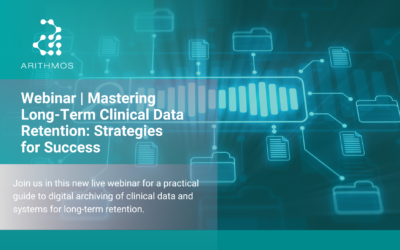How do you select the best Electronic Data Capture (EDC) system for your study? What are the must-have features and what are the nice-to-haves? We asked Pedro M. Lledó, a clinical data management professional with over 20 years’ experience, to share his tips on choosing an EDC system with the right functionality.
Key factors to consider
When you are looking for a new EDC system for a study, you should consider the following key factors:
- Vendor – find a reliable, experienced company which will be able to avoid the errors often involved in selling and implementing an EDC system.
- Type of study – the choice of EDC depends on the type of study and the type of users involved. You don’t always need the most expensive, powerful EDC on the market. For example, for Phase 1 or Observational studies you don’t need a complex eCRF suited for an oncology study.
- System functionalities – including how the system is hosted (cloud or on premises).
When choosing a system, make sure you involve all the teams you’ll need during the study. Talk to them in advance and let them know what the adoption of a new EDC system means. For instance, if you involved only the IT and DM departments, they might choose a system which did not support partial source data verification (SDV). The Clinical Operations department would then learn, only just before the study, that partial SDV (important to them and to the sponsor) was not available. This would be a cause for serious concern.
The features listed below will ensure that you achieve efficiency, data integrity and a smooth workflow, while also retaining independence in training clinical personnel.
EDC must-haves
When you have identified several EDC candidates, check them against your most important criteria. Your future EDC should be:
- Compliant – it must be a system that follows 21 CRF Part 11 rules, ensuring it is FDA and EMA compliant.
- Internet browser agnostic – it should run in the most popular browsers.
- Easy to program different types of queries and intra- and inter-page visits; it should be possible to address the queries, not only to the investigator site, but also to CRAs, DMs and MMs.
- Allowing per-user access control – every user, depending on assigned role(s) should have access only to permitted data or actions.
- Flexible –you should be able to create on-page queries and offline periodic listings and reports. This is important because you need to receive the warnings at the datapoint where the problem is located. In addition, you need some standard periodic listings to group all the queries by type, page, module, etc.
- Easy to monitor – this includes the presence of integrated reporting, standard study performance reports, KPIs and metrics. You need to see how people who are related to the data cleaning are performing.
- Easy to master independently – in addition to a user-friendly interface, it is important to also have online help resources.
EDC nice-to-haves
The functionalities listed above are critical to having an efficient EDC that allows you to capture data in a smart way. However, to reduce the number of errors in your data, to further boost data integrity and to ease the life of your data managers, I suggest you look for an EDC that also allows you to:
- Easily configure the register of user accounts for data managers, CRAs and sites users.
- Carry out partial SDV which allows you to save resources and focus on critical variables during the verification process.
- Configure query workflow which gives you additional flexibility and control in defining the query workflow, thus reducing risks such as overriding queries.
- Use it also on portable devices with good page rendering. Many medical personnel use mobile devices for activities control and CRF data entry.
- Optimise data management with dynamic CRF environment per protocol or patient data. In such EDC, different visits/pages or modules will appear or be hidden dynamically in a patient CRF. The CRF will automatically match the number of pages or modules to the amount of information.
- Gather data from, and share data with, other systems including eTMFs, CTMS, ePRO systems, patient wearable data management systems, PhV systems, BI tools and reporting systems. This reduces the amount of effort during the data input and ensures data integrity.
- Carry out training online through an e-learning training module.
Do not forget to ask about the technology layer behind the system. Trust a reliable, performant database, with fast, dynamic page loading and front-end rendering.
Finally, do not rush! Take your time to find the appropriate EDC. It will save you time, money and stress later.
Good luck!
Would you like to learn more about choosing the right EDC and about our proprietary EDC solutions? Send us your questions at info@arithmostech.com

About Pedro M. Lledó
Pedro M. Lledó is a physician by training who has been participating in clinical research projects for more than 20 years as IT specialist, database administrator or clinical research data manager. Before joining Arithmos he held leadership
positions within CROs and biotechnology companies as Head of Data Management and Biometrics.




